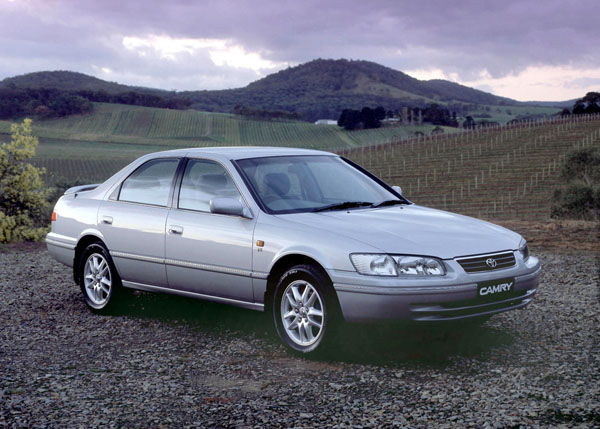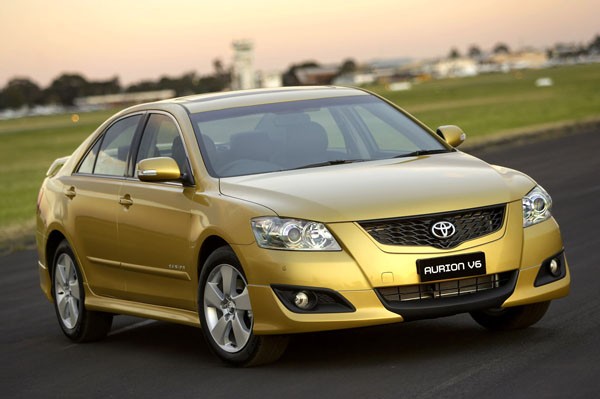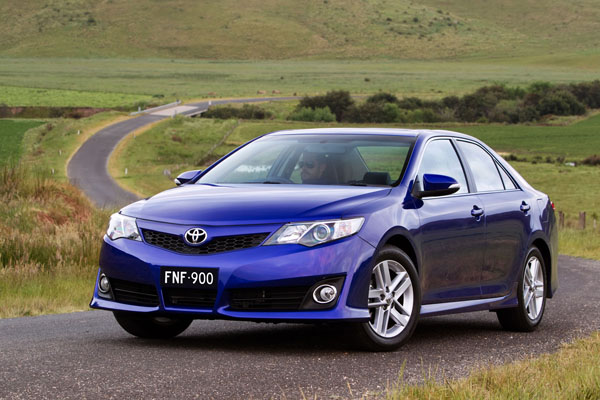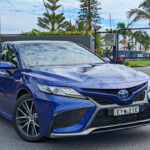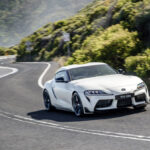Toyota Camry four-cylinder and Toyota Aurion six-cylinder are currently being built by Toyota in Melbourne, though they will be imported from 2017 onwards.
The existing models have many changes from the original Japanese design to suit them to Australian driving conditions and our drivers’ tastes. Thus they have slightly firmer suspensions and the engines are tuned to give them plenty of grunt off the line. Sadly, this will change after Toyota pulls out of local manufacturing.
These Toyota non-identical twins are aimed at the family car market. Though slightly smaller outside than Falcon and Commodore, later model Camrys and Aurions have almost as much interior room due to the space efficiencies of front-wheel drive. That’s in legroom, rear-seat width isn’t as good in the Toyotas as in the bigger Commodores and Falcons.
Another advantage of a front-drive car is substantially increased boot depth because there’s no differential under the floor.
Body types were four-door sedan and five-door station wagon in Camry until late 2002, when the wagons were discontinued. The Aurion comes only in sedan format. These days most buyers of family station wagons go for an SUV rather than a car, and Toyota has a large array of SUVs, and 4WDs, from which to choose.
These Toyotas are pleasant to drive, with a smooth, refined feel. Driving enthusiasts may find the pre-September-2002 model too soft for their needs; Toyota listened to comments, tightened up the suspension and steering and the later ones are fine.
Originally the Camry had a four-cylinder engine, V6s were added to the options lineup in 1997, then discontinued in July 2006 with the introduction of an all-new model.
The ‘Camry V6’ was renamed the Toyota Aurion when introduced in October 2006. All Aurions have a V6 engine.
The four-cylinder Camry engine was a 2.2-litre unit until September 2002, when it was replaced by a 2.4-litre four. Not only is this engine larger, but it’s also a more modern design and so far better to sit behind. A new four-cylinder engine of 2.5 litres was introduced in December 2011.
The V6 3.0-litre engine used in the Toyota Camry not only gives you extra power and torque, but also improves the feeling of refinement throughout the car.
By far the best powerplant is the twin-cam V6 used in the Aurion. Its 3.5-litre capacity gives it the sort of punch that’s needed to compete with the Commodore and Falcon sixes. Not only off the line and when overtaking on country roads, but also in the way it treats hills with disdain.
Toyota offers five-speed manuals in some variants of the Camry, but the great majority were four-speed automatics until the new model of 2006, when the self shifter was uprated to five speeds. The 2012 models have a six-speed auto. Selling or trading in manuals may not be easy down the line as Australia is becoming increasingly an auto-only market.
All Toyota Aurions have a six-speed automatic transmission with sequential overrides.
Toyota introduced a real hotrod called the TRD Aurion in August 2007. TRD stands for Toyota Racing Development. Featuring a supercharged version of the 3.5-litre V6 pushing out 241 kilowatts of power and 400 Newton metres of torque through the front wheels only was not a good idea. The car has fearsome torque steer that can be dangerous in the hands of an inexperienced driver.
Sales of the TRD Aurion were very slow and Toyota quietly slipped it off the market midway through 2009. Probably never to return – though ‘never say never’…
Yet another variant, the Hybrid Camry, was launched in February 2010. Its four-cylinder engine is backed up by an electric motor that is either charged by the petrol engine, or by energy regeneration when the car slows down. The strong torque supplied by the electric motor means the Hybrid is quicker off the mark than the petrol models.
Toyota has arguably the most widespread of dealer networks in Australia. With dealers in many remote areas due to its major presence in the 4WD and light-commercial fields.
Spare parts and servicing costs are generally reasonably priced and good home mechanics will find these cars are quite easy to work on. We recommend that amateurs always have a workshop manual on hand, and don’t touch safety related items.
The Australian heritage of these Aussie-built Toyotas means insurance is generally cheaper than for similar cars imported from Japan. There doesn’t seem to be much variation from company to company, but it’s still worth shopping around.
WHAT TO LOOK FOR
Drive the car at low speed on full steering lock and listen for noises at the universal joints at the front wheels.
Run your hand over the front tyre tread – more resistance one way than the other means uneven tyre wear. That’s often caused by an alignment problem.
Check over the condition of the interior in case the car has had a rough time.
Rust is only likely to be present if a car has been badly repaired after a crash. Check the lower body and mudguard areas and if you do find problems call in an expert for a full examination.
Automatic transmissions are exceptionally smooth so any harshness at other than big throttle openings should be investigated by a professional.
CAR BUYING TIP
Cars that sell new in huge numbers are obviously well represented on the used-car scene. Take advantage of this by sorting through the crowd for the best possible car.




